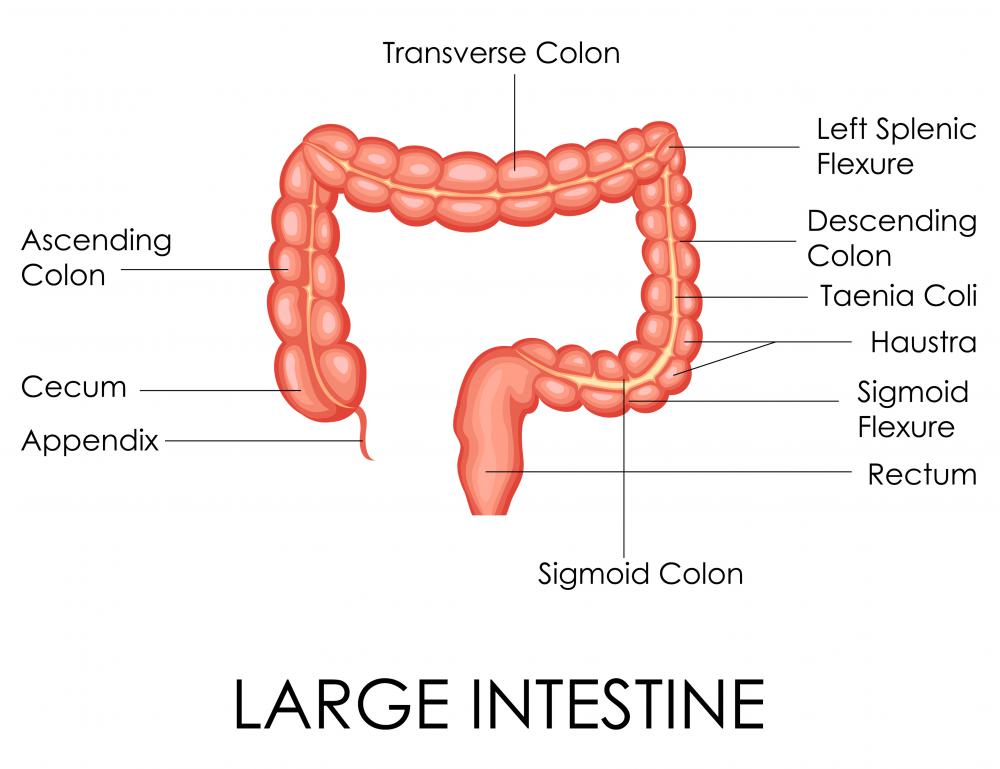At WiseGEEK, we're committed to delivering accurate, trustworthy information. Our expert-authored content is rigorously fact-checked and sourced from credible authorities. Discover how we uphold the highest standards in providing you with reliable knowledge.
What is the Midgut?
The midgut refers to the intermediate section of the digestive tract, stretching from the top of the small intestine to the approximate mid-point of the large intestine. It is preceded by the foregut, which includes the mouth, esophagus, stomach, liver, pancreas, gallbladder, and the uppermost portion of the duodenum, the first section of the small intestine. After the midgut comes the hindgut, which consists of a segment of the transverse colon, the descending and sigmoid colons, and the rectum — all parts of the large intestine. Included in the midgut are the latter two of the four sections of the duodenum. These are the jejunum and ileum, which are also sections of the small intestine, and in the large intestine, the cecum, ascending colon, and the upper two-thirds of the transverse colon.
The midgut is considered to begin in the second segment of the duodenum, where the pancreatic duct and bile duct are found and where much of the chemical breakdown of food takes place. Located just a few inches below the pylorus, the entrance from the stomach to the small intestine, these ducts are situated in what is known as the descending part of the duodenum. They supply the enzymes through pancreatic juice and bile, manufactured in the liver and stored in the gall bladder nearby, that break food into its macronutrient parts: carbohydrates, fats, and proteins.

From here, the midgut winds through the distal or lower two parts of the duodenum and enters the jejunum in the middle of the small intestine. The jejunum is where many of the nutrients liberated in the duodenum are absorbed across epithelial cells in the wall of the intestine, including the sugars glucose and fructose from the carbohydrates, amino acids from the protein, and several vitamins and minerals. Unabsorbed nutrients and water continue on through the ileum, the next section of the small intestine. This is where additional undigested nutrients are absorbed, including vitamin B₁₂, fatty acids, and glycerol from the breakdown of fats, as well as the by-products of digestion, such as bile salts.

Below the jejunum in the midgut is the cecum, which signals the beginning of the large intestine, the portion of the digestive tract responsible for the absorption of water, salt, and a few remaining vitamins as well as the removal of waste from the body. Curving abruptly upward from the cecum is the ascending colon, which then makes an abrupt 90-degree turn to form the transverse colon. The transverse colon is more or less level with the upper boundaries of the midgut. The first two-thirds of its length are included in the midgut, whereas the remaining length forms the beginning of the hindgut just adjacent to the spleen.
AS FEATURED ON:
AS FEATURED ON:














Discuss this Article
Post your comments